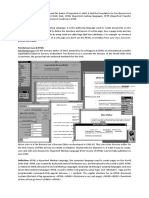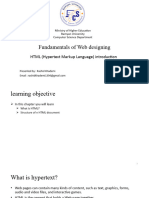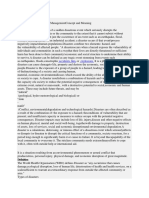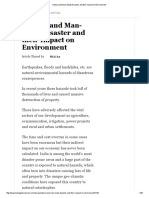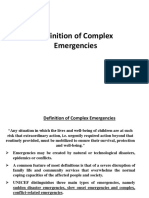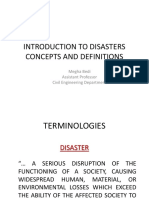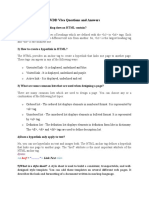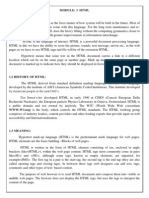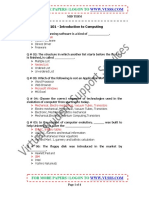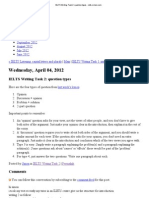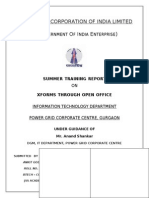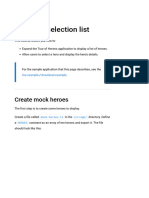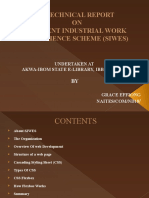0% found this document useful (0 votes)
91 views27 pagesBy Praveen Kumar Jha 1
- HTML (Hypertext Markup Language) is the standard markup language used to create web pages.
- Tim Berners-Lee proposed HTML in 1989 and developed the first browser and server software in 1990.
- HTML documents are managed and standardized by organizations like the W3C and WHATWG.
- Common versions of HTML include HTML5, the latest standard version.
Uploaded by
Praveen Kumar JhaCopyright
© © All Rights Reserved
We take content rights seriously. If you suspect this is your content, claim it here.
Available Formats
Download as PPTX, PDF, TXT or read online on Scribd
0% found this document useful (0 votes)
91 views27 pagesBy Praveen Kumar Jha 1
- HTML (Hypertext Markup Language) is the standard markup language used to create web pages.
- Tim Berners-Lee proposed HTML in 1989 and developed the first browser and server software in 1990.
- HTML documents are managed and standardized by organizations like the W3C and WHATWG.
- Common versions of HTML include HTML5, the latest standard version.
Uploaded by
Praveen Kumar JhaCopyright
© © All Rights Reserved
We take content rights seriously. If you suspect this is your content, claim it here.
Available Formats
Download as PPTX, PDF, TXT or read online on Scribd
/ 27







